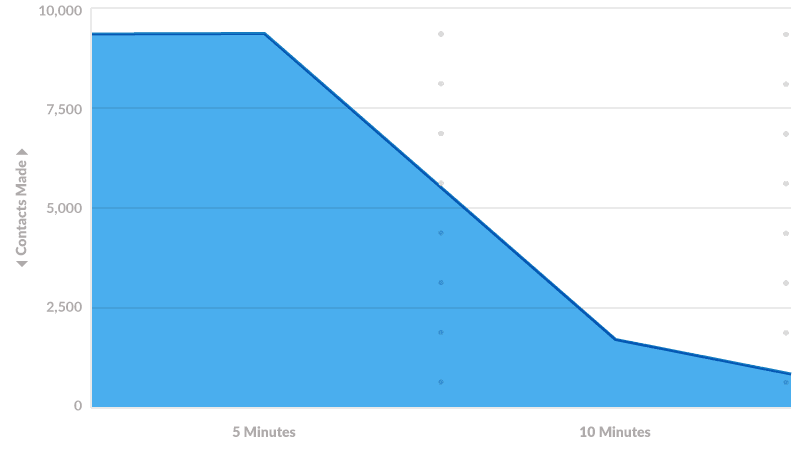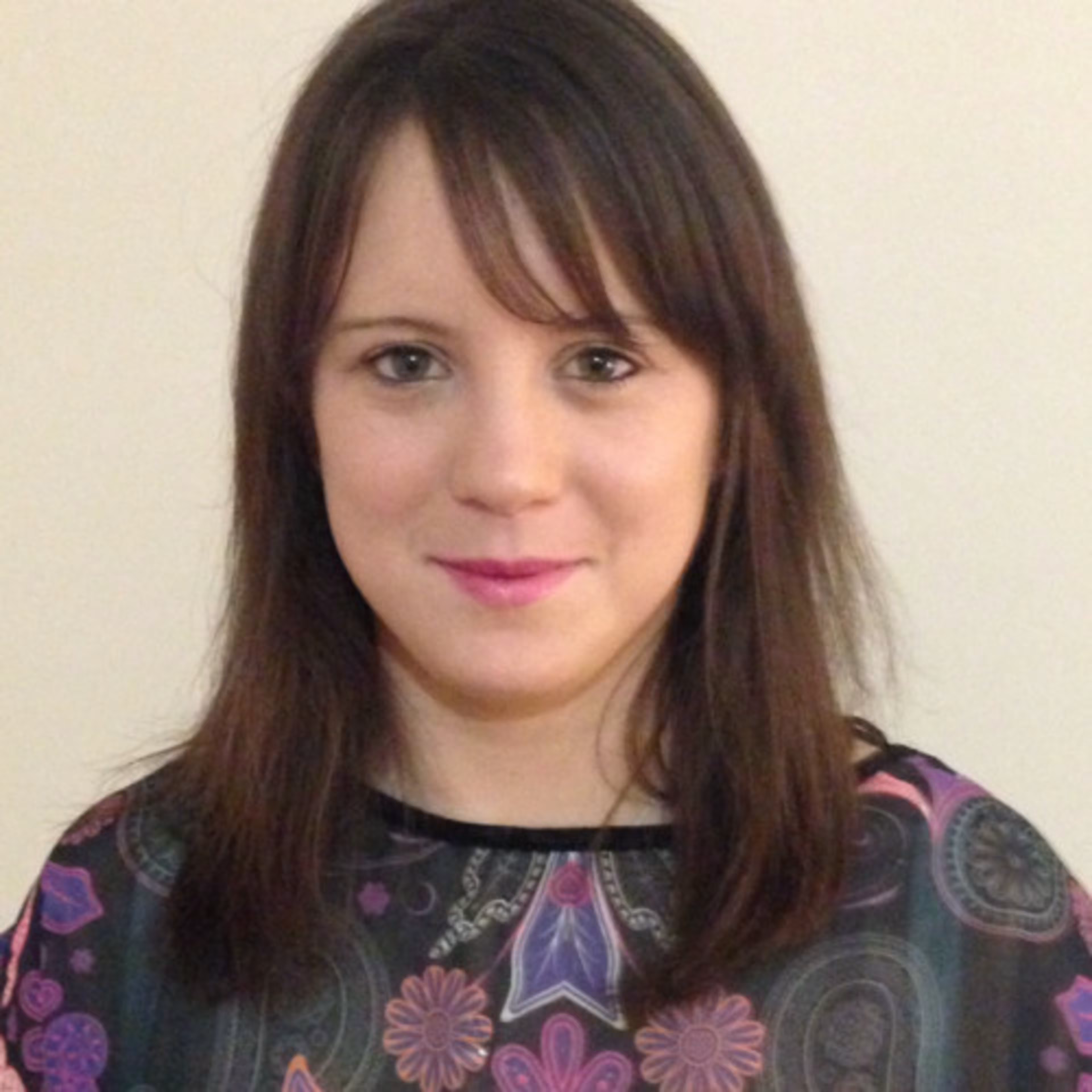I'll be the first to say it: Sales is a difficult profession.
You have to connect with people on a personal and professional level every day. You have to demonstrate the value of your company's product to people who have vastly different wants and needs. And you have to do all that with a monthly quota hanging over your head.
When you take the difficulty of sales and add it to a business-to-business (B2B) environment, closing deals becomes exponentially harder.
You're not striving to meet the needs of a single person but of a complex, multifaceted organization. You're not connecting with a single individual but with a committee of decision-makers who all have different focuses and goals.

If you're in B2B sales, your organization is looking for you to step up your sales game from month to month to maximize profits and help your company grow.
So how do you increase your sales when it feels like you're just trying to keep your head above water? How do you improve your sales process to keep the leads coming in and keep your revenue climbing up?
I talked to a panel of B2B sales experts to provide you with some B2B sales tips to do just that.
9 tips to increase B2B sales
I reached out to Capterra's client success team, which helps the B2B sales team reach its goals every day, and to other B2B sales and marketing professionals to get their hot tips for increasing your B2B sales.
1. Respond as quickly as possible
The overwhelming response was that the first step to increasing B2B sales is decreasing your response time to incoming leads.
Kelsey Walsh, a client success manager for Capterra, points out that this idea is backed by data.
She makes sure that every new member of her team becomes familiar with a study that analyzed three years' worth of lead data to show the relationship between response time and the likelihood of making contact, shown below.

Your likelihood of contacting a lead decreases significantly five minutes after a lead fills out a web form (Source)
Based on these results, Thomas Dickey, an account manager for Capterra, advises his clients: "When you get a lead, you should call within ten seconds of receiving it. Every minute you wait significantly reduces your chances of talking to that lead, or being the first vendor to talk to the buyer."
Vivian Lorencatto, another Capterra account manager, points out that the longer you wait to get in touch with a lead, the less likely a buyer will be to engage in conversation, as they're likely “already in touch with the competition."
Jói Sigurdsson, founder and CEO of CrankWheel, an inside sales solution, points out that sales shouldn't be the only team focused on fast response times:

Jói Sigurdsson
Founder and CEO of CrankWheel
"If you're in a position to influence things, work with marketing to make sure that leads get delivered to sales without any delay, zero seconds after they request a contact on your website, or from an email campaign. There are tools that can help enable this kind of instant demo-sales pipeline."
While account managers at Capterra recommend contacting a lead within the first five minutes of receiving it, some companies that Sigurdsson works with would consider even that time frame an egregious delay, classifying “a lead as cold if they didn't get a call within two minutes."
Takeaway:
Follow up with a lead as soon as you possibly can. Sooner is better than later, which might as well mean never.
2. Don't discount 'imperfect' leads
You might think that contacting a lead within five minutes will be difficult. But what about contacting a lead that left you inaccurate contact information?
Dickey has a tip for dealing with those tough leads:

Thomas Dickey
Account manager at Capterra
"Dig on all of the details you get from a lead. Just because a lead has a Gmail address or a phone number that doesn't work, doesn't mean it's a bad lead. There's often enough information in the other form fields that you can find an alternate number or a business line that's listed publicly."
You might think that's common sense in the sales world—who doesn't research the people they're calling? But Dickey says leads classified as “bogus" are sent to him all the time. By digging for 15 seconds or so, Dickey manages to find relevant information that allows him to get in touch with them.
So what's up with inaccurate info from leads and how can you get around it?
Sometimes prospects don't yet trust your company enough to hand over information. And who can blame them in the age of data breaches and data scandals?
To get past that 123-4567 phone number, Dickey recommends using a lead's IP address, the area code they listed, the name they provided—or combinations of all of these elements—and some “creative Googling to find good info that turns that 'bogus lead' into real revenue."
Takeaway:
Leads aren't always going to hand over all of their contact information, but that doesn't mean they're complete dead ends. Use the resources you have at your disposal—your fingers, your keyboard, and good old Google—to get the information you need to get in touch. And, back to tip No. 1, try to hunt it down in five minutes or less.
3. Get your customers to sing your praises
Speaking of trust on the internet, our panel of B2B sales experts suggests one surefire way to get prospects to trust you: Demonstrate that other people—i.e., your current customers—already trust you.
Srajan Mishra, CEO of TSI Apparel, feels that trust should be your brand's No. 1 focus since, in his experience, “B2B sales increase only if you can generate enough trust and be authentic in your approach."
Mishra recommends cultivating a “trustworthy digital presence" by “getting reviews on Google, Facebook, or any other review sites that are applicable to one's line and place of business."
I'd be a very bad sales adviser if I missed my chance to pitch my product, so I'll just mention that Capterra is currently the largest repository for objective business software reviews.

Srajan Mishra
CEO of TSI Apparel
"[A review] can influence business decisions like no other because it paints the picture of your business in the most neutral way possible. You can write as much as you want about yourself on your website, but it's what your existing clients think about you that really makes a difference."
To start gathering and cultivating objective reviews from your customers, Mishra recommends incentivizing them by offering a discount, gift card, or anything else that might encourage your customers to provide honest feedback about your product.
You shouldn't just let these reviews sit on your website and hope that users find them, though. Manny Medina, CEO of Outreach, suggests, “injecting customer evidence... at every stage of the sales process."
That means mentioning specific ways your customers have received value from your product during your calls and in your emails. You can quote reviews or work with your marketing team to create content such as case studies or white papers.
Takeaway:
Medina says, "When research suggests that only 35% of B2B buyers trust what a sales person says directly and there's overwhelming evidence that buyers trust their peers more, it's crazy to not use customer evidence preemptively across the journey."
Use your customers' voices whenever and wherever you can.
4. Put your leads' needs first
Another way to connect with your prospects, aside from showing them that you're already solving similar problems with other customers, is by always putting their needs above your company's.
Jack Sargent, inbound sales coordinator for Commusoft, suggests that you, "Research the prospect so you can start putting together ideas that will benefit them based on their company size, location, target market, and so on."
But Sargent is quick to note that you shouldn't rattle off all this information at the top of the call:

Jack Sargent
Inbound sales coordinator at Commusoft
"Keep your research and ideas in the back of your mind as you really listen to the prospect to understand their requirements and needs before you start selling. You want to know your customer and be prepared, but first and foremost to keep an open mind. You may be surprised about what really brought them to you!"
Takeaway:
You should always do your due diligence and research your prospects to get a better understanding of their needs. However, it's more important to listen to how your prospects themselves view their biggest challenges to understand how your product can best help them.
5. Don't discount cold calling
You've probably heard that cold calling is dead, but you shouldn't believe everything you read on the internet.
In fact, Cristian Rennella, CEO and co-founder of MejorTrato, says that his team's improvements to their cold calling strategy were a major factor in increasing the company's B2B sales by over 37%.
How do you turn your cold calls from failed sales strategies to moneymakers? Rennella recommends turning it into a hot call, instead:

Cristian Rennella
CEO and co-founder of MejorTrato
"Our best recommendation is, ten days before making the call, send a creative gift for the office. This way, when you call, your prospect will know exactly who is calling and will give you, simply by reciprocity—which is a characteristic that we all have—the benefit of listening to what you have to share."
When thinking about gifts you could send, Rennella recommends, “something new and creative that awakens your prospects' curiosity."
It should also be something related to their work environment or that's useful or fun for the whole office.
Takeaway:
Cold calls are still a viable option to increase B2B sales. You just have to work on getting your brand in front of your prospects' eyes beforehand. Leaning on the concept of reciprocity with small, work-related gifts doesn't hurt, either.
6. Focus your sales team
Just because you've now opened your mind to bringing back cold calls doesn't mean you should open your team's time up to any prospect under the sun. Especially if you have a small team, it might be more effective to have them set their sights on the most promising leads.
Outreach CEO Medina points out that:

Manny Medina
CEO of Outreach
"Managing hundreds of accounts can make even the best sales rep feel frustrated and overwhelmed."
Instead, he suggests, “narrowing your targets to focus on your ideal customer profile (e.g., industry, segment, and persona)."
He also adds that, “Zeroing in on a few juicy accounts can be really energizing and gives you a clearer and more attainable goal."
Takeaway:
Less is more when it comes to your sales targets. Figure out who your most likely customers are, and go after them first before expanding your efforts to more iffy prospects.
7. Make sure your marketing team is similarly focused
Your sales team isn't the only group that should focus in on what's working best for them. Your marketing team should similarly focus on the channels that bring in the best prospects.
Teresa Walsh, a marketing executive for Cazana, suggests the following methodology:

Teresa Walsh
Marketing executive at Cazana
"Find the social media channel that works best for your business; the usual suspects include Facebook, LinkedIn, and Twitter. Once you have done this, invest in some clever paid ads. Then target, target, target, and do some more targeting."
Takeaway:
By aligning your sales and marketing goals, you can ensure that your sales team is receiving the prospects they want to target.
8. Understand that a marketing budget is a marathon, not a sprint
Focusing your sales and marketing efforts makes it easier to follow through with this next tip from Sean Huang, an account manager at Capterra.
Capterra operates on a PPC model. Similar to Google AdWords, vendors bid for positions at the top of a page, directory, or category.
Huang points out:

Sean Huang
Account manager at Capterra
"Far too often, vendors prioritize a brief stint appearing at the top of the category, only to pay a premium on a handful of clicks and, thus, max out their budget very quickly (usually without much to show for it)."
While you might think that showing up as the first result on a page could never be a bad thing, that's a common misconception when it comes to paid advertising.
Huang explains that part of his job with client success is “encouraging vendors not to sprint the proverbial marathon but rather keep a steady pace and get more mileage out of their marketing dollars."
Being able to keep your ad live for, say, a month at a position on the middle of a page or listing “usually gets vendors more clicks or leads at a cheaper per-unit price than staying live for just a week at a top position," Huang says.
Takeaway:
There's no such thing as an infinite marketing budget, so don't burn through yours right away. Instead, serve your ads to potential customers consistently and persistently by appearing in a lower cost spot that you can afford for the long term.
9. Always provide clear next steps
If you've followed all these tips and still aren't closing deals, it might have something to do with how you end conversations with prospects.
Once you get in touch with a lead, get in the mindset of CrankWheel CEO Sigurdsson:

Jói Sigurdsson
CEO of CrankWheel
"This person may never again answer your emails or pick up the phone, so you have to make sure to set up the next step. Try to make as much progress as you can while you have them on the phone."
If a prospect is ready to buy from you, guide them through the purchase process. If they need to talk to other stakeholders before making a decision, ask to set a time for the next meeting.
Never leave a lead wondering when, how, or why they're supposed to get back in touch with you.
Takeaway:
You're in charge of funneling prospects through your sales pipeline. Make sure you're directing them through it by telling them exactly what you need from them next, and when.
Go sell, sell, sell
Every sales team is different, but I'm sure you can find at least one useful tip in here from our panel of B2B sales experts. Pick one, try it out, and see how it works for your profit margins. My guess is that you'll see some positive results.
Do you have any B2B sales tips of your own? Share them with your fellow readers in the comments below or blast it out to the Twitter-verse. Be sure to tag me @CapterraKelsie so I, too, can benefit from your sales wisdom.
Other resources:
Improve your lead follow-up process with some of these tips
Figure out your social media sales strategy
Get some advice for managing your PPC budget
Find out more about leveraging reviews to generate business